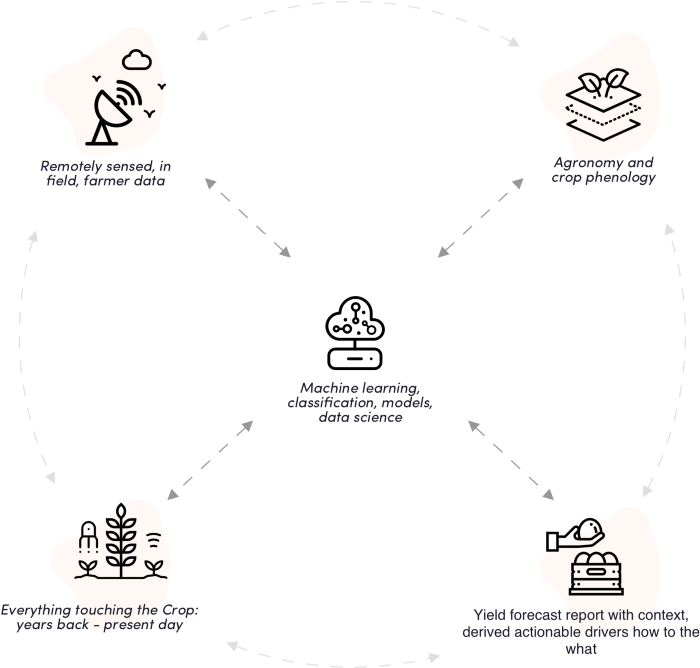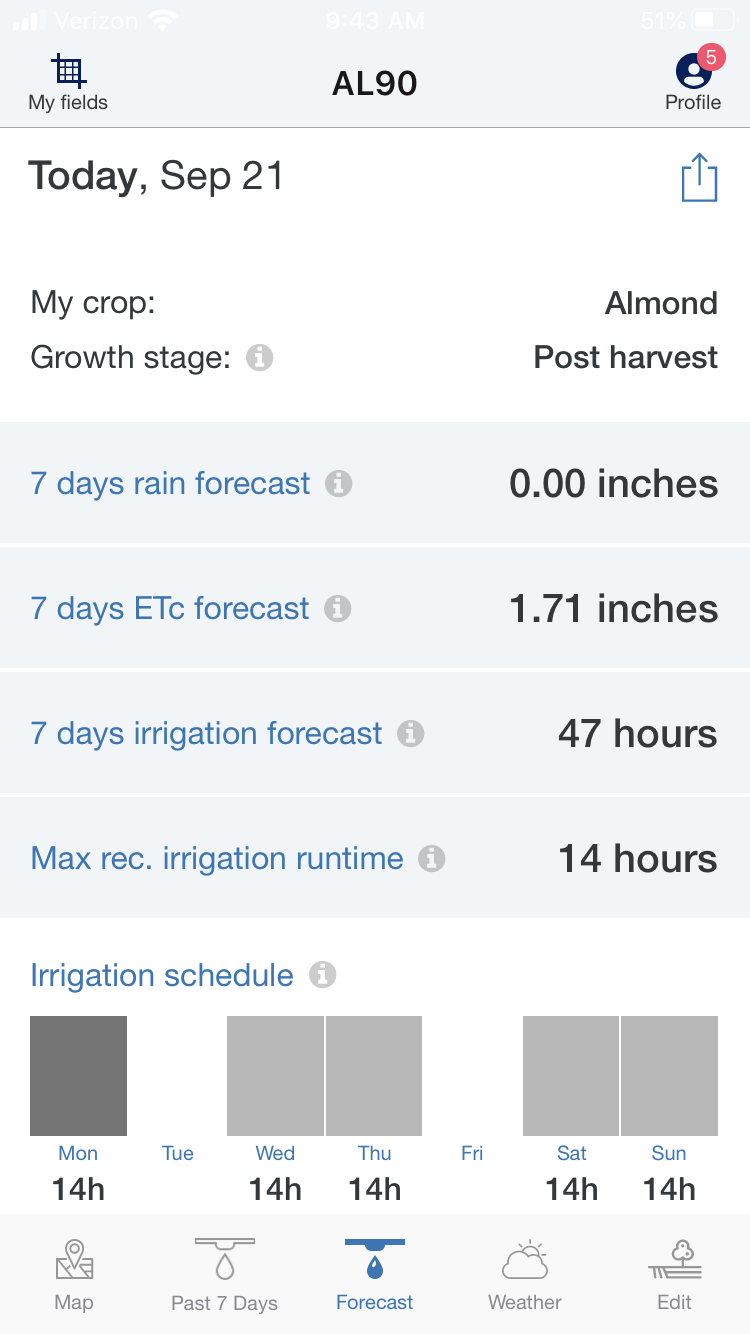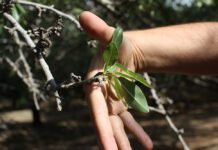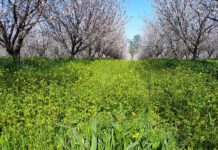
As the 2020 season draws to a close, hopefully you and your agronomist have a chance to review the season and plan for 2021. It has certainly been a challenging season with a wet and cool Spring, COVID-19 disruptions and late, intense heat waves. Although it would be nice to put a difficult season behind us and start fresh, we must remember that for the crop, next year’s start is dependent on how this season ends.
This is definitely true of crop nutrition as both nutrients and carbohydrates will be stored for utilization next spring. Early- and mid-season tissue samples as well as Fall soil samples, visual observations and yield numbers are integral to the evaluation process. With this valuable data in hand, post-harvest applications can be planned to help your orchard recover from harvest, store nutrients for the coming season and address soil deficiencies or imbalances.
It is also a great time to identify opportunities for improving your nutritional program next season. Perhaps you observed a great nut set this spring and determined your nitrogen rates based on projections for a heavy crop. In many areas, it appears that kernel weights are down, and therefore your application rates may have overshot crop demand. This ultimately resulted in a lower nitrogen use efficiency and wasted money on fertilizer. What can you do to determine the crop demand with greater accuracy next season? Maybe you applied an insufficient nitrogen or potassium rate since fertilizer rigs were unable to enter wet fields once March and April rains started. How can you prepare to be more timely with your applications next season?
Technology exists today that will help you dial in your crop nutrition program to maximize use efficiency, ease of application and ultimately hit those target yields.
Yield: The Moving Target
As an experienced grower, you know your fields and you know what yield numbers you
should be able to achieve. You also have a good sense for what looks to be a “light” or
“heavy” crop, and probably a good memory of previous production. But how accurate are your estimates? If you are accustomed to measuring yield by the number of truckloads from the field, what if weights are down? If you miss your estimate by 20-30%, you may have also missed your nitrogen rate by 20-30%.
It is not surprising that yield can be an elusive target. First, yield is not easy to measure.
Second, field conditions are constantly changing, and factors such as frost, pollination,
pest damage and irrigation can impact yield during the season. To become more precise in meeting the nutritional demands of the crop, it is important to forecast the yield accurately and adjust fertilizer applications accordingly.
One company working to assist growers with this challenge is Bountiful Agriculture. Megan Nunes, Bountiful’s founder and CEO, explained that starting in 2015, they began using data science to forecast with greater accuracy by processing location, weather, imagery and historical production data.
“We basically give you the yield potential range with the median point of what our model is estimating yield in a given field is going to be, and the spread of 90% probability where yield is going to end up,” Nunes said. “So, when you are visualizing things in the field, you can contextualize that with a number based off of a robust machine learning assessment of yield.”
Their team provides these forecasts at four points during the season in almonds, with walnut and pistachio support coming soon. There is still much work to be done, including relaying the information to different people on a farm management team.
“You’re trying to figure out how to build something that works for multiple people, but each of those people making decisions want to see the information from a different viewpoint because they are going to use it a little differently,” Nunes said.
If growers can get better yield forecasts, disseminate the data in a usable format to their team and respond to changes in season, there is the potential to make gains on nutrient efficiency.
Water is Key
Research has clearly demonstrated the importance of irrigation management in relation
to crop nutrition. For nitrogen particularly, poor irrigation management can result in poor use efficiency and nutrient losses from the field. Therefore, it is extremely important that growers focus efforts not only on fertilizer application rates, but also on application timing and method.
Scott Warr, Commercial Manager for Digital Farming at Yara North America, found this
to be an area where better digital tools could help. Working closely with growers and advisers, Warr found that they recognized the importance of irrigation management, but they acknowledged there was still a need to improve their management. Yara, a fertilizer company, responded to this need by developing an irrigation scheduling app called Farm Water Advisor.
“What we’ve done is provided a very precise crop evapotranspiration calculation based on a specific field, crop type, soil type, tree size and hyper-local weather data to determine crop demand,” Warr said. “We’re using this crop water demand, specific to the field, to generate an irrigation schedule to maximize water utilization.”
By maximizing water utilization, growers have a better chance of also maximizing nutrient utilization.
Warr is quick to note that the tool is not a replacement for other in-field observation tools like
manual probing or soil moisture sensors, but it does give a very localized, baseline estimate of crop demand and a schedule based on the irrigation system specifications. He hopes that Farm Water Advisor’s ease of use and precision will allow many growers to make improvements to their irrigation management, and see the beneficial impact that has on their crop nutrition program as well.
Fertigation’s Capabilities and Limitations
With many nut growers operating or converting to drip irrigation systems, a significant
percentage of nutrient applications are being made through those drip systems. The use of fertigation systems has grown dramatically over the last 10 to 15 years, and advanced automation equipment is available to schedule, control and monitor those systems.
Phil Bartel, President of Streamline Irrigation in Kingsburg, Calif., emphasizes the importance of tailoring systems to the grower’s needs. He states, “The first thing to address is what your goals are. If you want to schedule an inject every 10 days or 2 weeks, we can set up a simple system that is scheduled through the online platform or controlled manually, and build in failsafes to protect the system from issues like a pump failure, for example.”
In more complex systems, it is possible to inject multiple products and automatically inject proportional to the flow of water. Bartel also stressed that by avoiding overly complicated systems, growers can save money and reduce the risk of equipment breakdowns.
However, just because a field has a fertigation system installed, it does not mean that optimal nutrient applications are being made. Growers need to diligently maintain their irrigation systems as performance issues that affect irrigation uniformity and efficiency will also affect nutrient use efficiency. Imagine a situation where all of a field’s nitrogen is fertigated during a season. If the distribution uniformity falls to 70%, that means your fertilizer application uniformity is at most 70%. The use efficiency could be much lower. Regularly inspecting and maintaining the irrigation system, carefully scheduling fertigation events and monitoring crop irrigation demand will pay dividends in your nutritional program.
Putting It All Together
More accurately determining your crop yield and water demand, paired with a properly
designed and maintained fertigation system, can make huge improvements in your nutritional programs. Combined with periodic soil and tissue samples to verify nutrient levels, you can achieve a high level of confidence you are supplying what your crop needs to maximize yields.
















